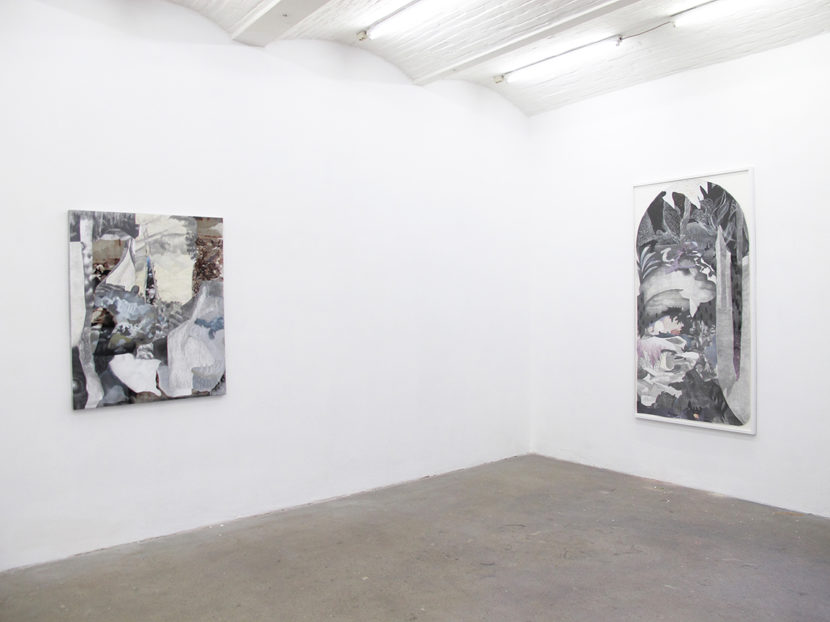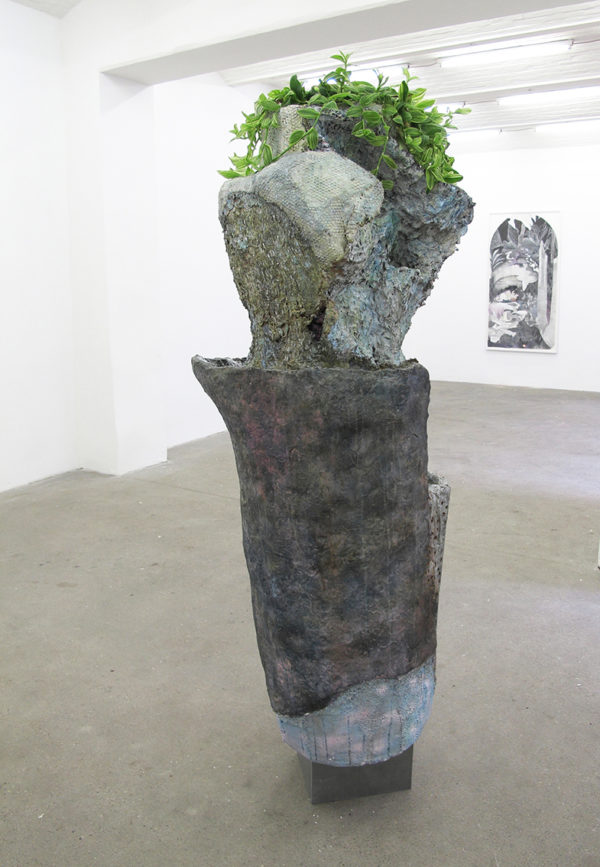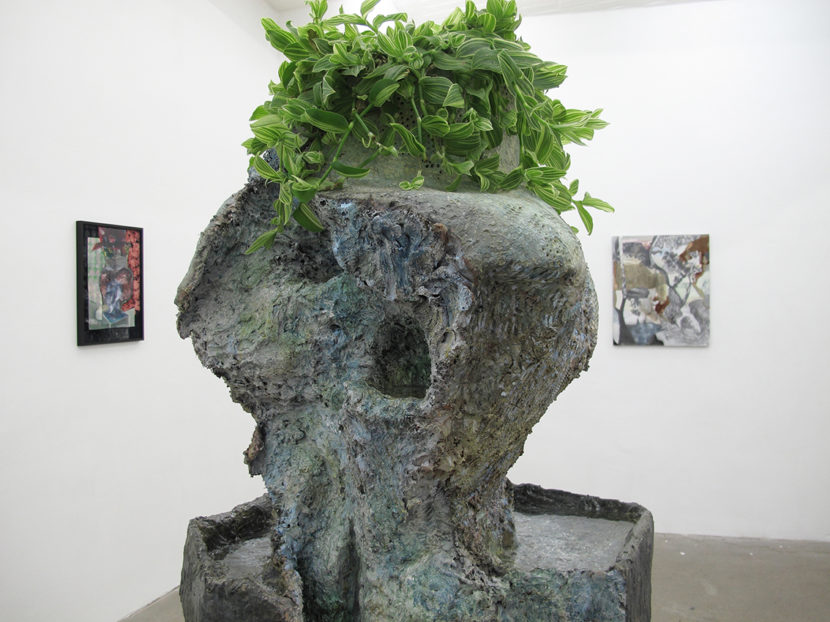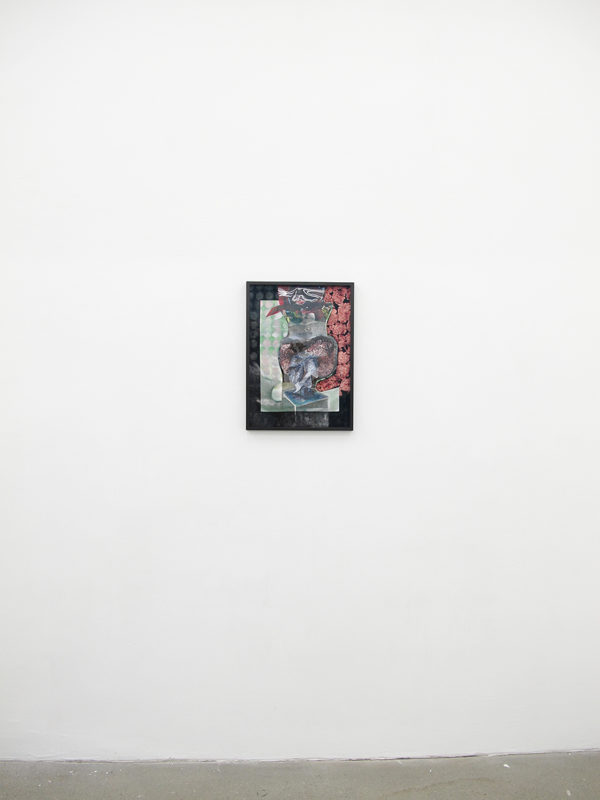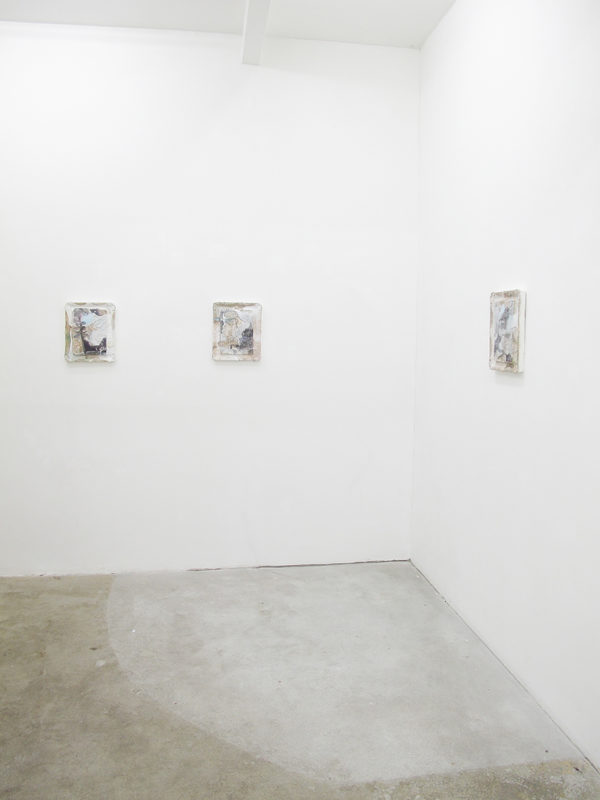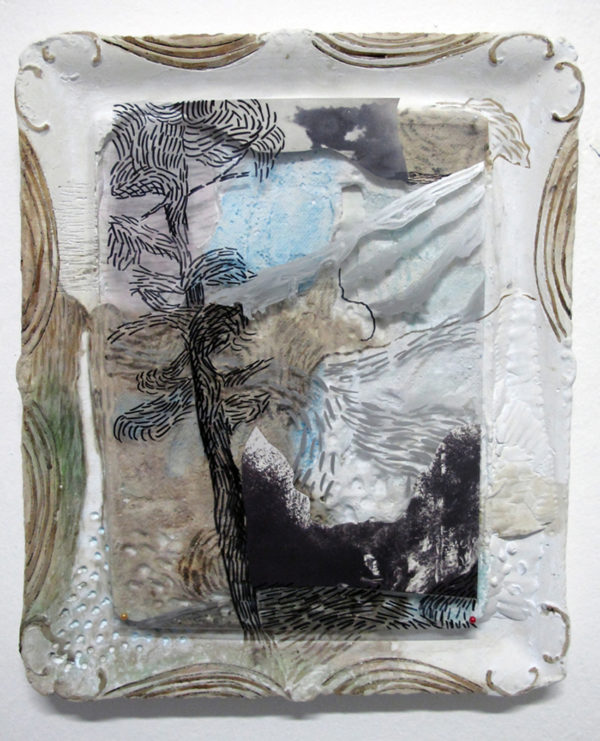Unfolding the Folds
Galerie Alexandra Saheb, Berlin
August – September 2011
Solo show
Poster download
Among Gilles Deleuze’s theories, a concept more than others has marked my researches, that of the “fold” and the “interstice” which I used as a tool to explore contemporary abstraction. In short, Deleuze departs from the Baroque to demonstrate that our spatial and temporal coordinates are relative. The Baroque, indeed, prefiguring the hereafter, reveals us that our position is well grounded and rooted on earth and that we must search for the “divine” within us. Baroque painting, but especially sculpture, repositions our body into a new mathematical system not measurable according to the coordinates of Leon Battista Alberti’s perspective, which instead were the basis of Renaissance culture. The weather effects of the ceilings painted by Gaulli, for example, or the folds and twists sculpted by Bernini, make the space deep, a collection of atmospheric forces: rays, explosions, flashes and waves whose origin remains almost unknown. These forces are brought to life in the works of Alessandro Roma, layers of “masses” and not well identified signs that once we would have imputed to supernatural forces, such as those that the medium leaves on paper during a séance or the automatic calligrams escaped from the surrealists’ subconscious. Here, however, there is something different. The signs left by Alessandro do not come from imagination or dream. Rather they come from a careful observation of the infosphere in which we are immersed. His landscapes, for example, have neither horizon nor vanishing points. On the contrary, they are rich of folds, like those mentioned by Deleuze, and interstices in which space seems to close. What the eye sees, then, is a system of possibilities: holes, shadow cones, stains and textures of an electronic nature. Space, reduced as it is to such an immaterial stage, therefore, becomes even more real because it is not only to the eye that is delegated its exploration. The viewer’s brain is called in and asked to unfold the folds and fill them with his own presence. If this invitation is not clear in front of the paintings and reliefs on the wall, already quite extended in space, surely we would not escape in presence of the sculptures. Observing these ever-changing masses, surrounding them with our movements and suddenly changing the direction of our steps, we are called to reconsider our own position on earth. The chances that Alessandro’s works offer, are endless, and have nothing to do with the formlessness of matter, as we might think initially, but with the inform-act-ion and with the way we see reality. The interstice, therefore, is not a space between things but, if anything, an organism where we recognize things between spaces. Once involved in this eschatological device, we realize that it is not the matter used by the artist which loses shape but our conventions and convictions, what we thought was a landscape and what we thought we were ourselves.
IT
Tra le teorie di Gilles Deleuze, un concetto più di altri ha segnato le mie ricerche, quello della piega e dell’interstizio che ho utilizzato come strumento per esplorare l’astrazione contemporanea. In breve, Deleuze parte dal Barocco per dimostrare che le nostre coordinate spaziali e temporali sono relative. Il Barocco, infatti, prefigurando una realtà ultraterrena, ci svela che la nostra posizione è ben radicata a terra ed è dentro di noi che bisogna ricercare il “divino”. La pittura, ma in particolar modo la scultura barocca, riposiziona il nostro corpo in un nuovo sistema matematico non misurabile secondo le coordinate prospettiche di Leon Battista Alberti, che invece erano state alla base della cultura rinascimentale. Gli effetti metereologici delle volte dipinte dal Gaulli, per esempio, o le pieghe e le torsioni scolpite dal Bernini, rendono lo spazio intenso, un agglomerato di forze atmosferiche: raggi, esplosioni, bagliori e onde la cui origine rimane pressochè ignota. Di queste forze si animano le opere di Alessandro Roma, stratificazioni di “masse” e segni non ben identificati che una volta avremmo imputato a forze sovrannaturali, come quelli che lascia sulla carta il medium durante una seduta spiritica o come i calligrammi automatici fuoriusciti dal subconscio dei surrealisti. Qui, però, c’è qualcosa di diverso. I segni di Alessandro non sono frutto dell’immaginazione ma, al contrario, di un’attenta osservazione dell’infosfera in cui siamo immersi. I suoi paesaggi, per esempio, sono privi di orizzonte e punti di fuga. Al contrario, sono ricchi di pieghe, come quelle di cui parla Deleuze, e di interstizi in cui lo spazio sembra richiudersi. Quello che l’occhio vede, dunque, è un sistema di possibilità: buchi, coni d’ombra, macchie e texture di natura elettronica. Lo spazio, ridotto così com’è allo stadio immateriale, diventa pertanto ancora più reale perché non è all’occhio che viene delegata la sua esplorazione. Il cervello dello spettatore è chiamato in causa e invitato a spiegare le pieghe e a riempirle con la sua stessa presenza. Qualora questo invito non fosse evidente di fronte a dipinti e bassorilievi a parete, già piuttosto estesi nello spazio, senz’altro non avremmo via di scampo al cospetto delle sculture. Osservando queste masse cangianti, circondandole con i nostri movimenti e cambiando improvvisamente la direzione dei nostri passi, siamo chiamati a riconsiderare la nostra stessa posizione sulla terra. Le possibilità che le opere di Alessandro ci offrono, sono infinite, e non hanno a che fare con l’inform-ità della materia, come in un primo momento potremmo pensare, ma con l’inform-azione e con il nostro modo di vedere la realtà. L’interstizio, quindi, non è uno spazio tra le cose, semmai un organismo in cui riconosciamo delle cose tra gli spazi. Una volta coinvolti in questo dispositivo escatologico, ci renderemo conto che non è la materia utilizzata dall’artista che perde forma ma sono le nostre convenzioni e convinzioni, quello che pensavamo fosse il paesaggio e quello che credevamo fossimo noi stessi.
F.Spampinato

